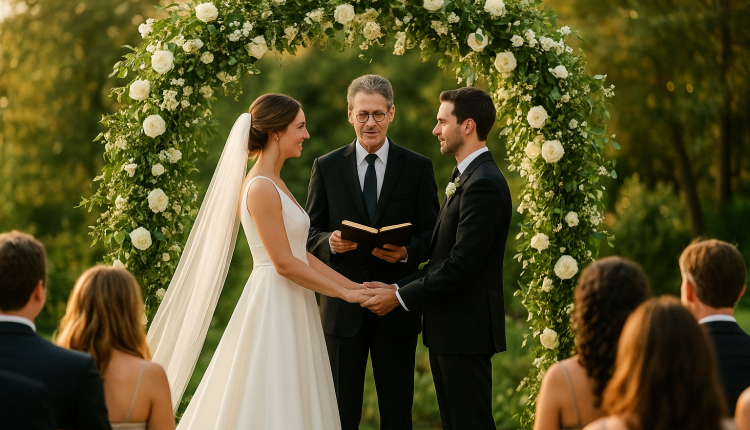Crafting the Perfect Wedding Day: A Guide to Thoughtful Planning, Personal Style, and Memorable Moments
Your wedding day is a beautifully personal moment, a celebration that should reflect who you are as a couple rather than simply following tradition for tradition’s sake. While many resources focus on the same familiar checklist—venue, dress, flowers—this guide explores deeper layers of intentional planning, thoughtful style choices, and memorable guest experiences. Whether you’re two months out or just beginning to think about your big day, these insights will help your wedding stand out as both intimate and dynamic.
1. Defining Your Wedding Narrative: Beyond “Theme”
Many couples start with a “theme”, but the most memorable weddings emerge from a clear narrative—a story about why you’re celebrating, who you are together, and how you want your day to feel. Begin by asking: What three words best describe our relationship? It might be adventurous, understated, artistic. Then let those words guide every decision.
For example: if “artistic” stands out, consider a ceremony backdrop inspired by a favorite painter, or invitation stationery printed in letterpress style. If you identify as “adventurous”, then a mountaintop or urban rooftop venue might reflect your relationship better than a ballroom. This narrative-driven approach ensures each detail—from menu to music—feels cohesive, rather than a random collection of pretty items.
2. Venue as Atmosphere, Not Just Location
Your venue doesn’t just house the event—it is part of the experience. Rather than viewing it as a blank stage to fill, many couples now choose locations that already offer character and charm so that design details enhance rather than compete.
If you pick an old warehouse with exposed brick, for example, you may need just soft drapes and candles to soften the space. If you’re outdoors, a garden or vineyard may come “pre-decorated” by nature—but will need contingency plans for weather, sound, and lighting. Prioritize a space that already resonates with your story, then layer on design elements that feel like you.
3. Style That Reflects Personality (and Comfort)
Your wedding style should achieve two goals: look amazing in photos and feel comfortable in real life. Clothes don’t need to be uncomfortable just for “the look”. Here are overlooked tendencies:
-
Second Outfits: Many couples now plan two or three outfits—the formal ceremony look, a more relaxed reception one, and maybe a playful post-party style. This allows the tone of each segment of the day to shift naturally.
-
Groom & Partner Style: Don’t limit “wedding attire” to the bride alone. Partner garments, accessories, even shoes can reflect themes or tones. Matching fabrics? Coordinated textures? Go ahead.
-
Functional Shoes: The glamorous shoe is fine for photos—but if you’ll dance, stand for hours, or move between locations, bring a backup pair. Photos of a comfortable, genuine smile are worth far more than heroic high-heel posturing.
4. Guest Experience That Feels Intentional
Weddings that feel most memorable to guests are those where the experience is prioritized. Some thoughtful touches include:
-
Arrival Moment: A welcome drink or a quiet lounge area sets an early tone. Guests arriving should feel transported into your world—not just hustled into the ceremony room.
-
Dining Flow: The reception meal isn’t just fuel—it’s a shared experience. Rather than a long sit-down dinner that feels formal, consider creative seating (connected or serpentine tables), interactive food stations, or lounges for mingling.
-
Memory Tokens: Instead of standard favors, consider small meaningful items: a handwritten note from you, a photograph of the guest with you, something usable. The best tokens tie back to your story.
5. Planning Checklist: Smart, Not Overwhelming
Rather than multiplying spreadsheets and to-do items until you’re exhausted, focus on key milestones and treat additional items as enhancements. Key milestones might include:
-
Choosing your narrative and venue (first 2–3 months)
-
Booking core vendors (photographer, officiant, venue) once narrative is set
-
Style coordination (outfits, décor) 3–4 months ahead
-
Guest communication (invitations, website) 2–3 months
-
Final logistics (seating, timing, weather plan) in last month
By anchoring your timeline around experience milestones (how the day will feel), rather than simply tasks, you keep planning grounded and enjoyable.
6. Photography & Memory Capture with Intention
Great photographs don’t happen by accident. To ensure images that truly reflect your day:
-
Make a shot list, but don’t over-schedule. Leave room for spontaneous moments.
-
Meet with your photographer in advance; discuss your narrative and share your mood board so they know the emotion you want to capture.
-
Consider a “quiet exit” or “sunset moment” scheduled 15 minutes before formal ending—this gives you private time and beautiful light for portraits.
-
Don’t forget the unscripted! Candid laughter, child-guest moments, unexpected joy often make the most touching images.
7. Staying True Under Pressure
Planning a wedding inevitably brings advice from every direction. While guidance can be helpful, you should feel empowered to say no to trends, décor, or formats that don’t align with your narrative.
-
If unions (e.g., ceremony traditions) aren’t reflective of your beliefs, find alternative rituals that represent you.
-
If you’re paying for much of the event yourself, budget decisions should respect your priorities—wasteful splurging may give you photos, but not necessarily satisfaction.
-
On the wedding day, delegate. Assign someone you trust as point person for vendor issues or guest questions so you can remain present.
Conclusion
Your wedding day is one chapter in your larger story together—but as one chapter, it deserves to feel authentic, intentional, and memorable. By choosing a strong narrative, a venue that feels real, style that reflects you, thoughtfully curated guest experiences, and smart planning, you’ll craft a day that feels less like an event and more like you. Stay flexible, prioritize meaning over perfection, and let the moments of joy—the laughter, the good food, the shared dances—shine through. That authenticity is what will remain in your memories (and photographs) long after the day is over.


